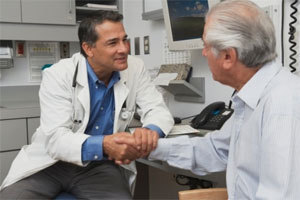One in six physicians own or lease imaging equipment: study
by
Olga Deshchenko, DOTmed News Reporter | December 27, 2010

One in six doctors reported their practice owned or leased advanced imaging equipment in 2008, fueling concerns about self-referral practices, a new study finds.
While previous studies focused on physician self-referral in specific services, such as advanced medical imaging, there has been little insight on physician ownership or leasing of imaging equipment on a broader, national level.
The study, which was funded by the Robert Wood Johnson Foundation and released by the Center for Studying Health System Change last week, surveyed doctors in a range of specialties.
The center's 2008 Health Tracking Physician Survey asked doctors if their main practice owned or leased equipment used for lab work; X-rays; diagnostic imaging such as CT or MRI; non-invasive testing equipment; or invasive procedures such as cardiac catheterization.
Researchers found that almost one in seven physicians reported their practice owned or leased three or more types of equipment, according to the study. Of the 2,750 physicians in physician-owned practices, who represent more than half of all doctors, 25.2 percent said their practice owned or leased equipment for lab services; 22.7 percent for X-rays; 17.4 percent for advanced imaging; 28.9 percent for non-invasive procedures; and 11.4 percent for invasive procedures.
Researchers found variations of ownership or leasing of imaging equipment by specialty and practice size. Primary care physicians, excepting pediatricians, were more likely than other doctors to own lab testing equipment.
Surgeons were also more likely to own equipment for advanced imaging - 30.3 percent. However, 10.6 percent of primary care physicians treating adults and 15.7 percent of procedure-based specialists, such as cardiologists, also owned imaging equipment.
"Consistently, equipment ownership was more likely the larger the practice, where the equipment can be used more consistently and costs recouped more quickly," the researchers wrote. "A majority of physicians in the largest practices - more than 50 physicians - owned equipment for laboratory services, X-rays, advanced imaging and non-invasive procedures."
In the study, researchers highlighted the implications for self-referral issues. Although provisions in the federal physician self-referral law known as the Stark Act prohibit self-referrals to certain health services, there are numerous loopholes in the legislation, especially if the service is provided at the doctor's office or practice.
"Given the growing evidence that physician self-referral contributes to unnecessary and costly care, policy makers might reconsider the broadness of the in-office ancillary service exemption to the Stark law," the study's authors wrote. "Ultimately, moving away from fee-for-service payment toward payment mechanisms that reimburse physicians for a broader unit of service, such as an episode of care, or putting physicians at least partially at risk for the cost of care, will alter the financial incentives that now encourage physician self-referrals."
